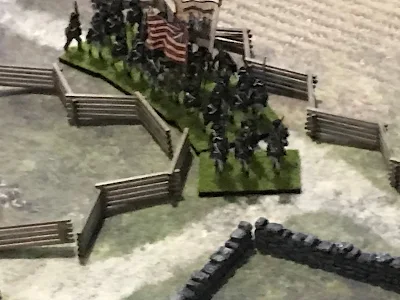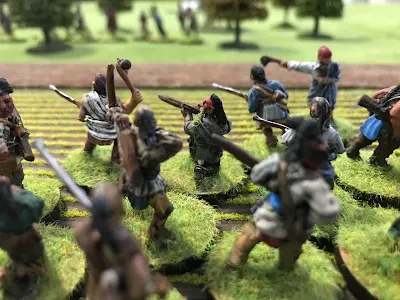Amos Doolittle (1754-1832), a New Haven silversmith and engraver was a member of the Governor's Second Company of Guard. Receiving word of the fighting on 19 April, 40 volunteers of this company marched to Cambridge, MA, arriving on 29 April. Among the ranks were Doolittle and a portrait painter named Ralph Earl. Although Earl is not recorded as being a member of the company he nevertheless came along.
Camp life being dull, the two received permission to journey to Lexington and Concord in order to investigate sites of the recent conflict. In early May, the two men traveled from Cambridge out to Lexington and then Concord. Doolittle interviewed numerous participants while Earl sketched the landscape. Amos instructed the painter as to what activities were to be depicted in each scene; and even posed with musket when needed. Only a solitary person - Levi Harrington from Lexington reported the visit, "...a stranger from Connecticut came here to take a sketch of the village as it appeared on the 19th of April 1775... and he afterwards published a series of copper plate engravings".
By late May, Doolittle and Earl had returned to home where the four paintings were copied onto copper and "neatly engraved" plates used to make a set of prints. These we're sold either "plain ones or coloured". Curiously neither placed their name on the advertisement. There were claims that Doolittle used the water colors of a 14 year old for his engravings but those paintings were done in 1777-78; probably from Amos's 1775 prints. In 1831, Doolittle credited Earl as his cohort in conversations with historian J. W. Barber and the friendship of the two was verified in June 1800 when the noted artist Earl displayed his work at the home of Doolittle.
THIS DAY PUBLISHED, and to be SOLD at the STORE of Mr. JAMES LOCKWOOD, near the College, in New-Haven, Four different views of the BATTLES of LEXINGTON, CONCORD, etc. on the 19th of April 1775" "Connecticut Journal" December 13, 1775
Thus was advertised the only pictorial record by a contemporary American of the events of 19 April. While historians have noted minor inaccuracies, the general consensus has been that the four prints are a correct, detailed representation of the fights
The Concord plates (II and III) depicted "A View of the Town of Concord with the Ministerial Troops destroying the Stores" and "The Battle at the North Bridge in Concord"; Lexington plates, "The Battle of Lexington" (I) and "The South Part of Lexington where the first Detachment were joined by Lord Percy" (IV).
By the late 1800s/early 1900s the plate were being carefully studied by historians of the battle. Though crude they were rich in detail and depicted the story from the colonists side. Both Allen French and Harold Murdock used the plates in their ground breaking books and essays. Criticism of the plates centered on the fact that no British soldiers had been interviewed and thus the prints were biased and propaganda for the colonials. In addition small detail errors were pointed out - uniforms and equipment wrong, formations and troop dispositions incorrect. To the complaint that too many activities were depicted at once, Doolittle answered that his intent was to condense time at each location and show as many events as possible in each scene.
How many original prints were published, how many complete or partial sets remain and what happened to the original engraved plates and paintings are questions that remain unanswered. Over the years, numerous re-engravings and reprints have been done but searches for the Earl paintings have produced but one possible item; The "View of the Town of Concord" that currently is displayed at the Concord Museum. But this too is shrouded in controversy with some individuals thinking it to be an original (passed Minots to Brooks to Merricks to Buttricks) while others believe it to have been painted by a Concord man, who copied from the Earl version.









.jpeg)









.jpeg)



